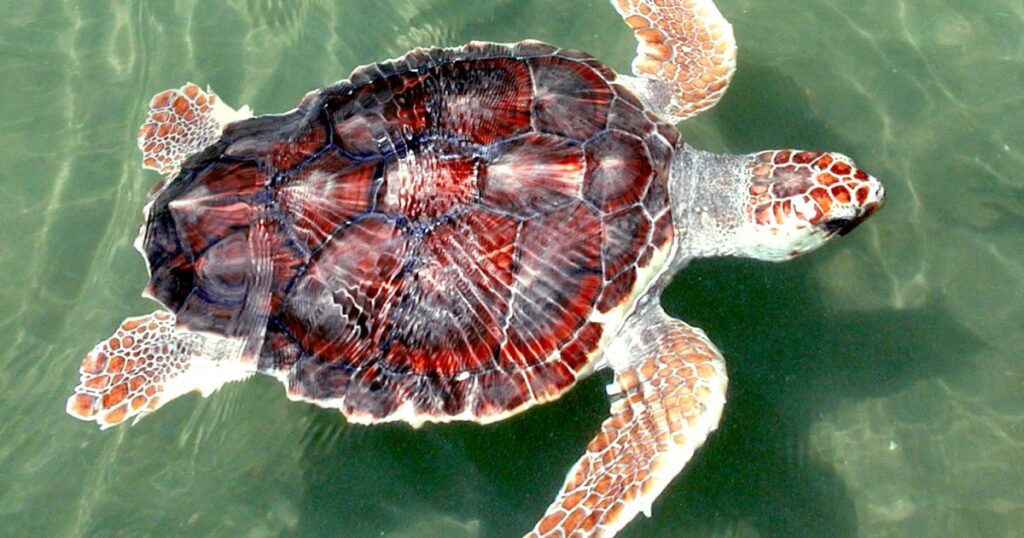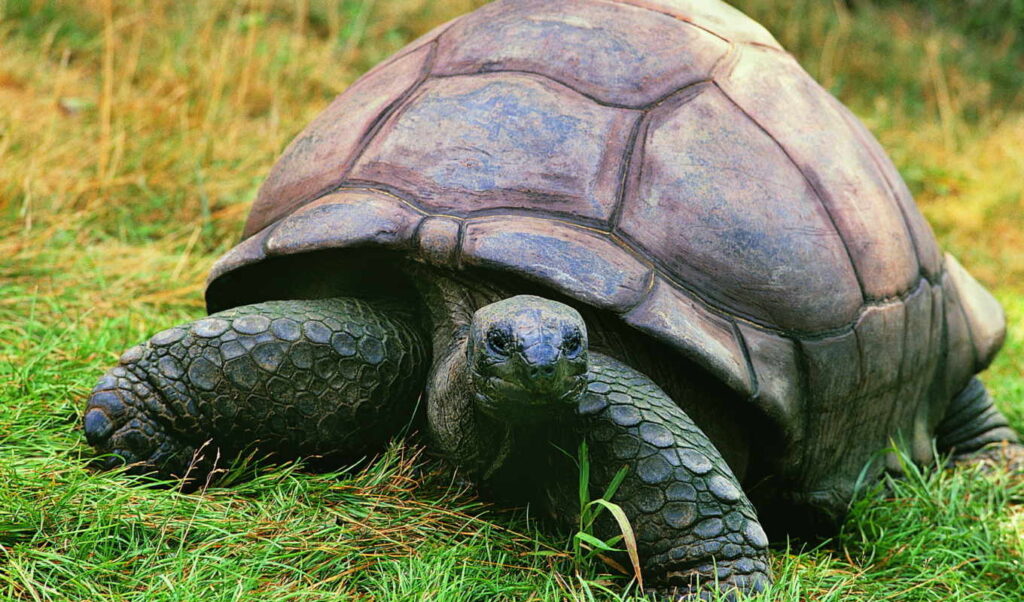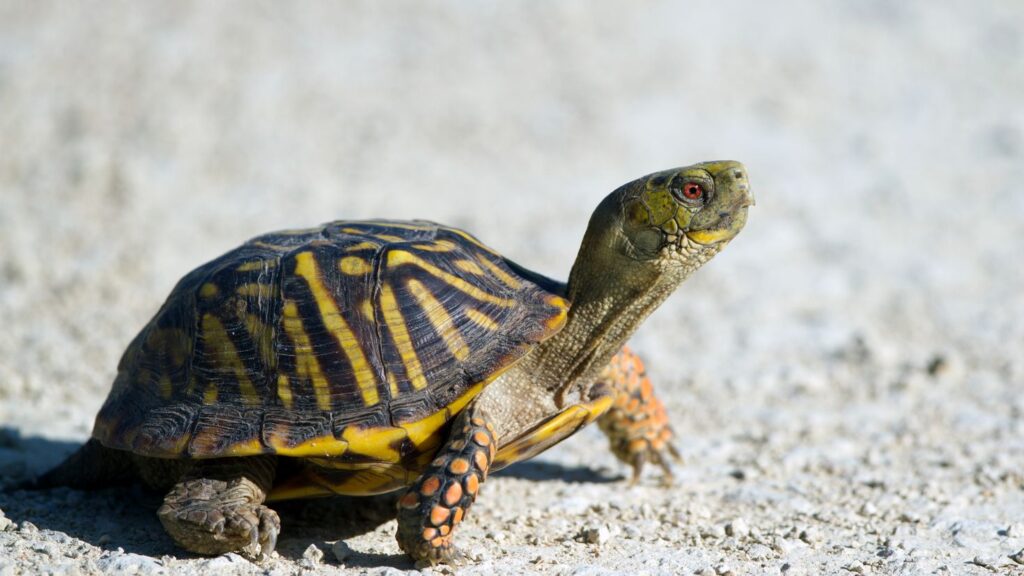Table of Contents
ToggleIntroduction

In the vast tapestry of the animal kingdom, few creatures evoke as much intrigue and debate as turtles. Their enigmatic nature, adorned with iconic shells and a leisurely pace, has sparked a longstanding query within scientific circles. Are Turtles Amphibian Or Reptile? Their remarkable adaptations and diverse habitats have captured the imagination of researchers, naturalists, and enthusiasts for generations. Their seemingly amphibian-like affinity for water, coupled with reptilian traits such as their distinctive shells and terrestrial egg-laying habits, has blurred the classification lines, prompting a quest for clarity within the scientific community.
Defining Amphibians And Reptiles
Amphibians and reptiles are two distinct classes within the animal kingdom. Amphibians typically undergo metamorphosis, starting their lives in water as larvae (e.g., tadpoles) and then transitioning to land as adults. They possess moist skin and usually lay eggs in water. On the other hand, reptiles are characterized by dry, scaly skin, breathing through lungs, and lying shelled eggs on land. Snakes, lizards, crocodiles, and turtles all fall under the reptilian classification.
Turtle Anatomy And Traits
Turtles, often recognized for their shells, are characterized by a bony or cartilaginous shell that encases their body. This unique structure distinguishes them from other reptiles. They have diverse habitats, from oceans to freshwater environments, and exhibit various sizes and shapes. Some possess webbed feet for swimming, while others have sturdy legs for walking on land.
The Debate: Are Turtles Amphibians Or Reptiles?
The classification of turtles has been a point of contention among biologists and taxonomists. While their need for water and ability to live on land and in aquatic environments might suggest an affiliation with amphibians, turtles possess several characteristics that align more closely with reptiles. Their shell, scaly skin, reliance on lungs for breathing, and laying eggs on land all point towards reptilian classification.
The Taxonomic Consensus
Modern taxonomy firmly places turtles within the reptilian class. Their skeletal structure, reproduction methods, and physiological traits strongly align with those of reptiles. Genetic studies have supported this classification, emphasizing the evolutionary relationship between turtles and other reptilian species.
Evolutionary History Of Turtles
The ancestry of turtles stretches back millions of years. Fossil evidence indicates their existence since dinosaurs, showcasing their remarkable survival through various environmental changes. Their unique shell evolution has been a subject of interest among scientists, providing insights into the adaptation and diversification of these creatures.
Ecological Importance Of Turtles
Turtles play a crucial role in ecosystems worldwide. As omnivores or herbivores, they contribute to the balance of food chains by consuming various plants and animals. Additionally, turtles can serve as indicators of environmental health, with their population declines often signaling ecosystem imbalances or pollution issues.
Conservation Efforts And Challenges
Despite their resilience, turtles face numerous threats, including habitat loss, pollution, climate change, and illegal wildlife trade. Several species are categorized as endangered or critically endangered, necessitating concerted conservation efforts to protect their populations and habitats.
Future Research And Understanding
Continued research on turtles is vital to comprehending their biology, behavior, and ecological roles. Exploring their genetic makeup, nesting behaviors, migratory patterns, and responses to changing environments can aid in implementing effective conservation strategies.
Taxonomy And Classification Of Turtles
Turtles, scientifically classified under the order Testudines, are a diverse group of reptiles known for their distinctive shells. The classification of turtles has been debated for centuries, primarily regarding their classification as amphibians or reptiles.
Amphibian Or Reptile: Understanding The Dichotomy
Amphibians: Amphibians typically undergo a metamorphosis process, starting their lives in aquatic environments as larvae and then transitioning to life on land as adults. They have permeable skin that requires moisture and lays eggs in water. Frogs, toads, and salamanders are all kinds of amphibians.
Reptiles: Conversely, reptiles are characterized by their dry, scaly skin, breathing air using their lungs, and laying shelled eggs on land. This class includes snakes, lizards, crocodiles, and turtles.
Unique Traits Of Turtles

Turtles boast several unique features that set them apart within the reptilian world:
Shell Structure: Their most iconic feature, the shell, comprises an upper carapace and a lower plastron, providing protection and support.
Habitat Diversity: Turtles inhabit many environments, including oceans, rivers, ponds, and terrestrial habitats.
Variety in Size and Shape: From tiny species like the Bog Turtle to large sea turtles like the Leatherback, turtles exhibit immense diversity in size and morphology.
Adaptations for Aquatic Life: Some turtles have flippers or webbed feet, enabling them to navigate through water efficiently.
Resolving The Classification Debate
The classification of turtles has primarily leaned towards their categorization as reptiles due to various physiological and anatomical traits:
Shell Composition: The bony or cartilaginous shell distinguishing turtles is a characteristic feature more akin to reptiles than amphibians.
Egg Laying: Turtles lay eggs on land, a trait shared with reptiles, while amphibians typically lay eggs in water.
Respiratory System: Turtles rely on lungs for breathing, another trait aligning them with reptiles rather than amphibians.
Evolutionary History And Adaptations
Turtles have a rich evolutionary history dating back millions of years. Fossil evidence suggests their existence alongside dinosaurs. Their unique shell evolution remains a topic of interest among scientists, revealing insights into their adaptation to various environmental changes over time.
Ecological Importance And Conservation Concerns
Turtles play critical roles in ecosystems as herbivores or omnivores, contributing to the ecological balance by consuming plants and animals. However, many turtle species face severe threats due to habitat destruction, pollution, overexploitation, and climate change. Conservation efforts are crucial to safeguard their populations.
Conclusion
While the debate surrounding the classification of turtles as amphibians or reptiles has persisted, scientific evidence firmly places them within the reptilian class. Their unique characteristics, evolutionary history, and genetic makeup align more closely with reptiles despite certain amphibian-like traits. Understanding and appreciating the significance of these creatures in ecosystems can foster effective conservation measures to ensure their survival for generations to come.







